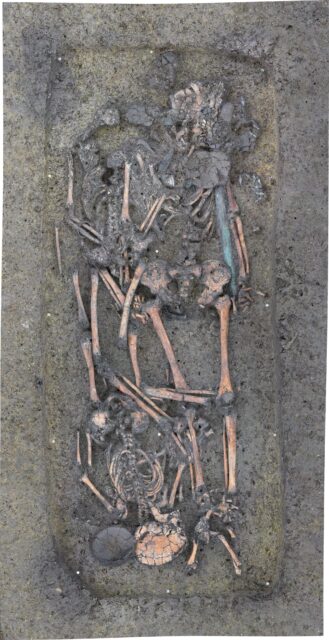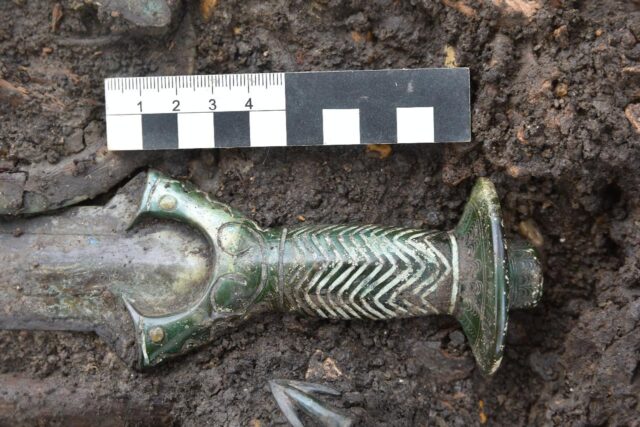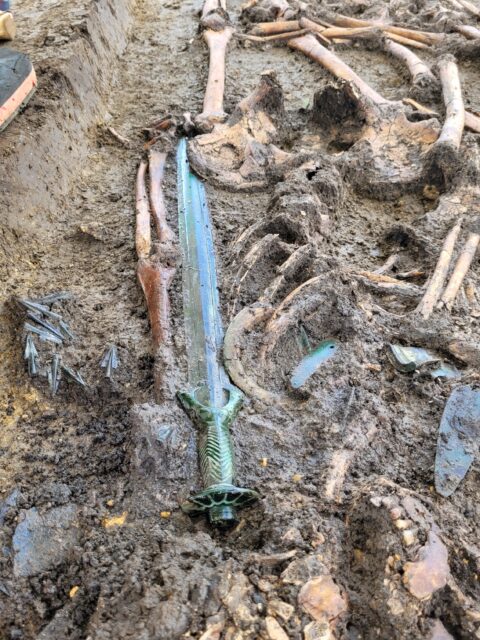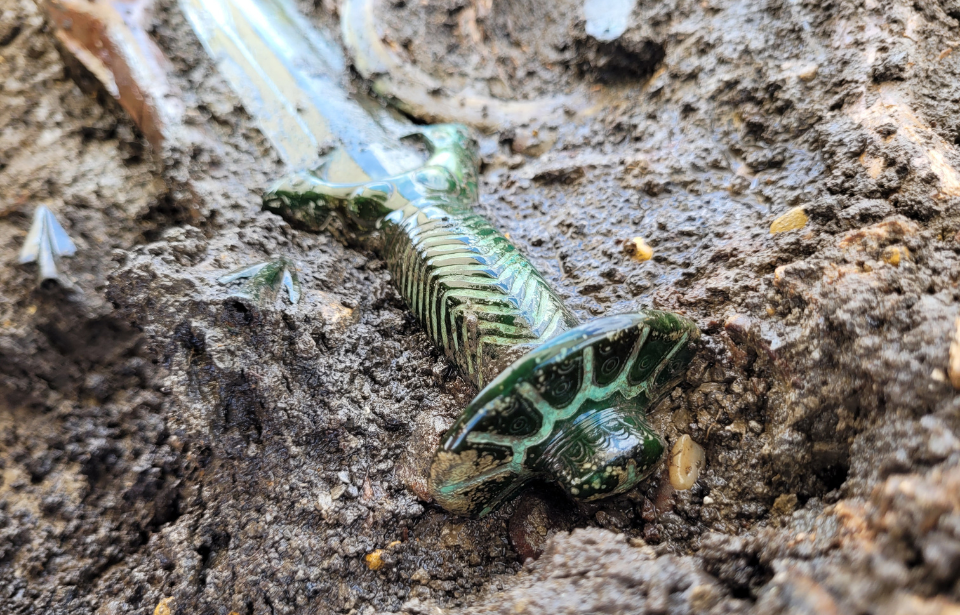German archaeologists have made a remarkable discovery in the south of Bavaria, Germany. According to a statement released by the Bavarian State Office for Monument Protection, a 3,000-year-old sword was discovered in exceptional condition. While much research needs to be done on the location where it was found, what was found with it, and the sword itself, the discovery is an extremely rare find given the item’s age.
Archaeologists discovered it in a burial ground

When archaeologists discovered the 3,000-year-old sword, it was within a three-person burial site that dates back to the late 14th century BC. The site is in the town of Nördlingen in Bavaria, serving as the final resting place for what appears to be a man, woman, and child. For now, it is unclear whether the three were related or what their relationship was to one another, but what archaeologists do know is that they were buried in “quick succession.”
Finding the sword at the burial site was a rare discovery, as that area is known for being looted of other treasures in the past. “Sword finds from this period are rare and come either from burial mounds that were deliberately opened in the 19th century or as single, presumed sacrificial finds,” a translation of the statement said.
The blade was found in exceptional condition

Despite the several millennia that the sword spent buried with the remains of those three people, when archaeologists discovered it, it was so well preserved and in such good condition that the blade “almost still shines.”
The sword itself is a unique discovery as it has an ornate octagonal hilt, known as achtkantschwert in German, that could have been only fashioned by the most skilled bladesmiths. The hilt was made from bronze containing copper, which has slowly turned green over time due to its oxidization resulting from being exposed to water and air.
The statement explained, “The production of octagonal swords is complex because the handle is cast over the blade (so-called overlay casting). The decoration is made with an inlay and using hallmarks. While there are two real rivets, another pair of rivets are only implied.”
Researchers know of only two locations where the manufacturing of octagonal swords took place at the time. One was in the south of Germany, and the other was in northern Germany and Denmark. However, researchers are still unsure exactly where this sword was cast.
Was it a wielding or ceremonial sword?

The exceptional state of preservation that the sword was found in allowed archaeologists to notice that it has no nicks or scratches on the blade, and exhibits an overall lack of wear. This initial observation suggests that the sword was simply for ceremonial purposes. However, upon further inspection, it was discovered that the sword’s center of gravity is located in the front end of the blade, quite suitable for slashing down opponents. As such, it is unclear what the true purpose of the sword was, and further examinations will be required to determine the answer.
More from us: ‘French Stonehenge’ Destroyed to Make Room for Hardware Store
“The sword and the burial still have to be examined so that our archaeologists can classify this find more precisely,” said Mathias Pfeil, head of the Bavarian State Office of Monument Protection, the organization involved in the sword’s conservation. “But it can already be said: the condition is exceptional! A find like this is very rare!”
